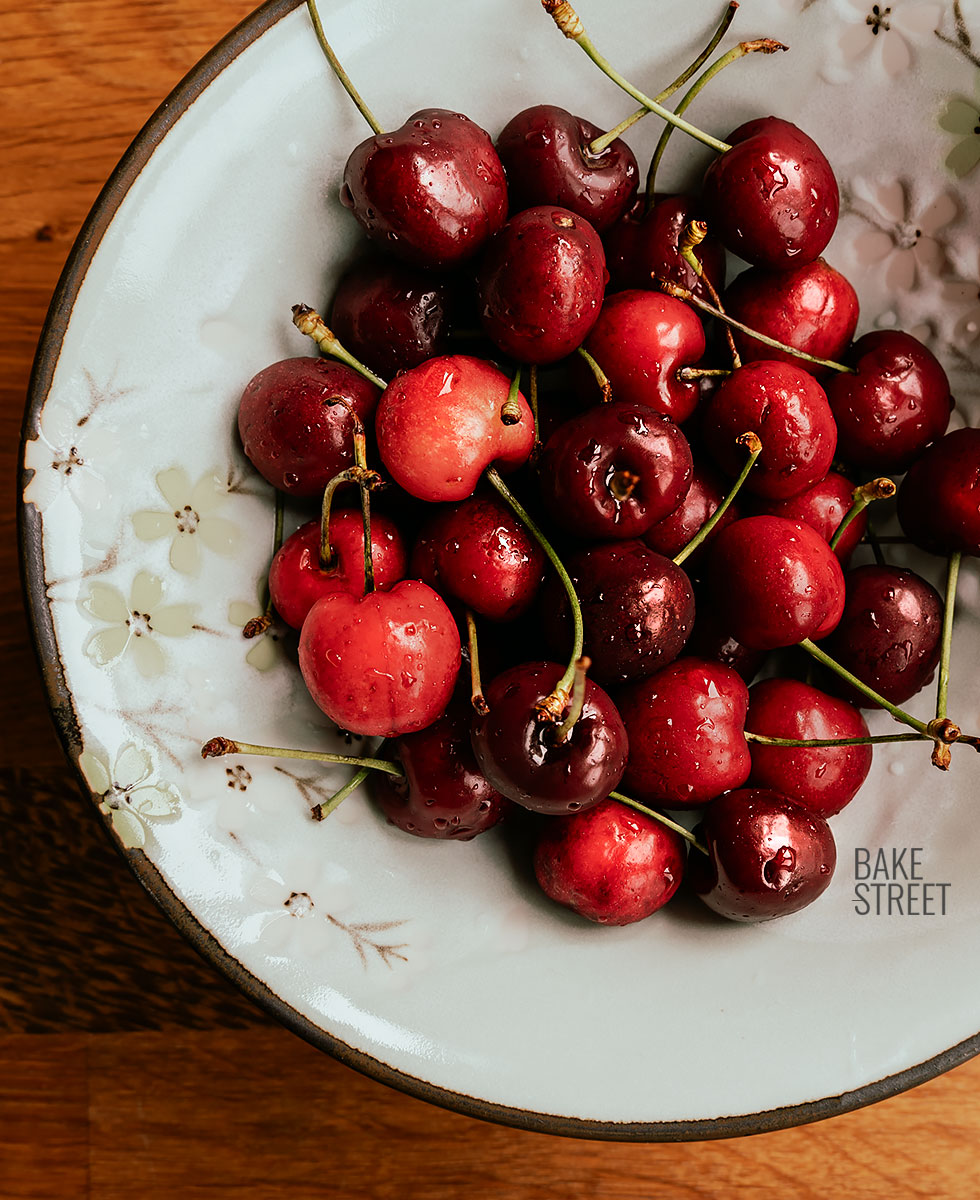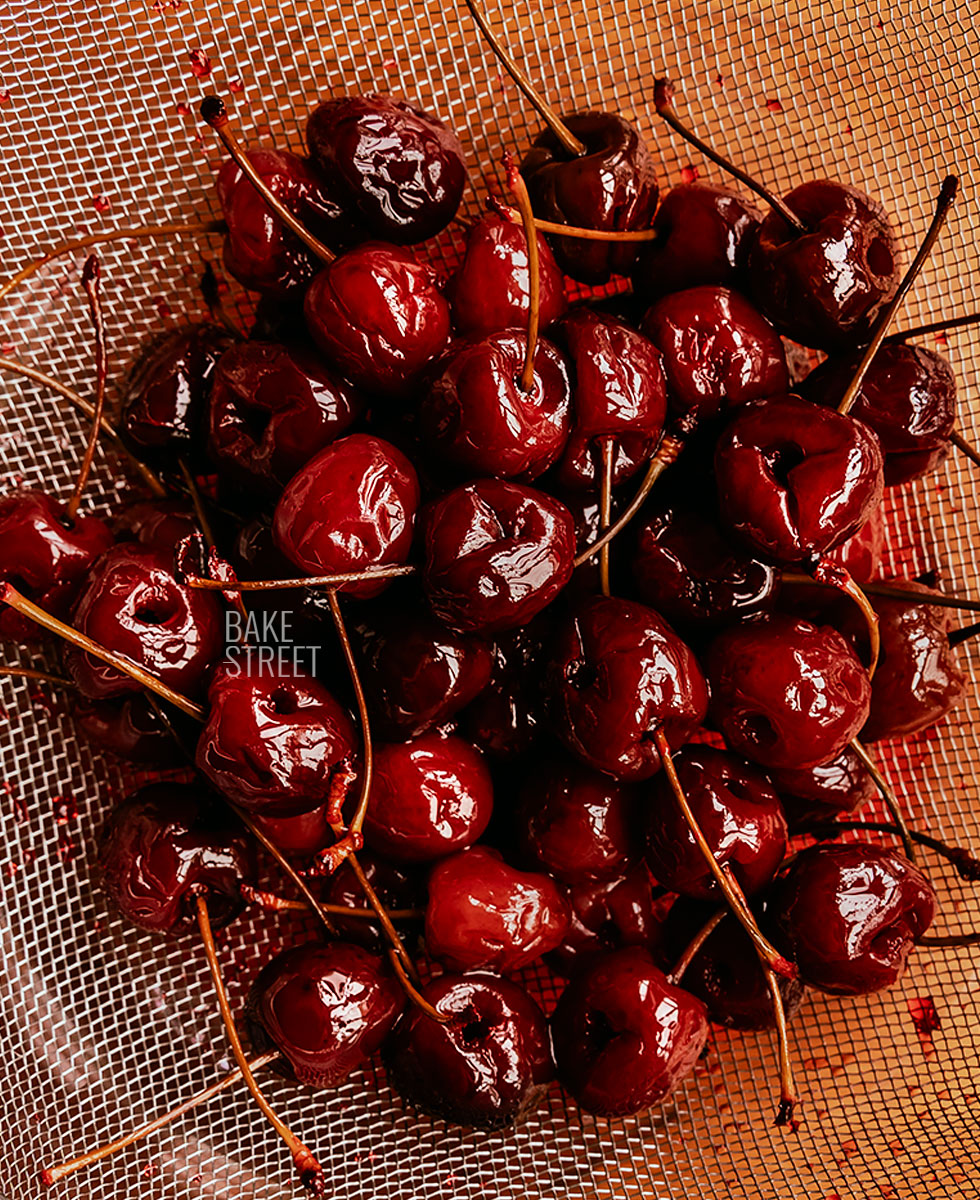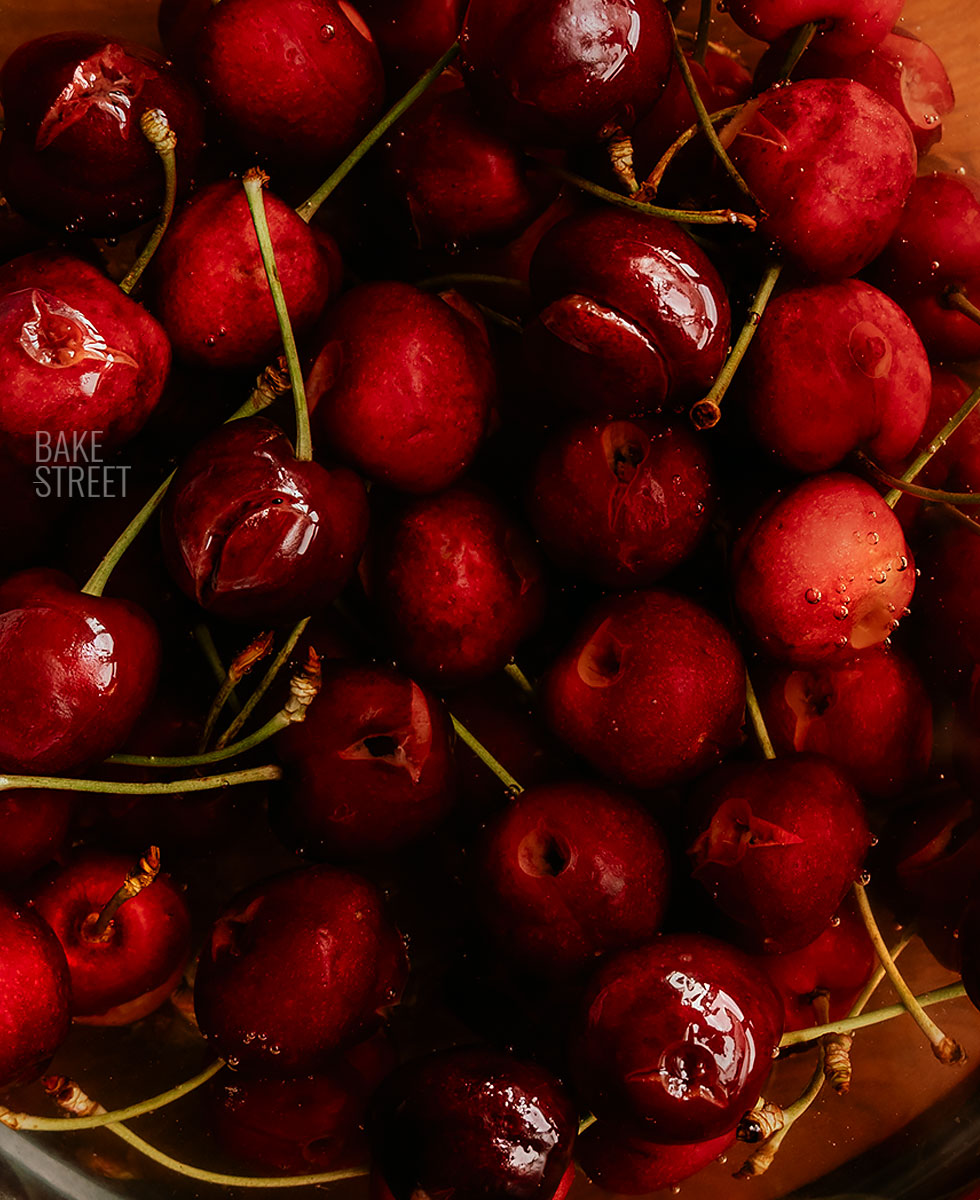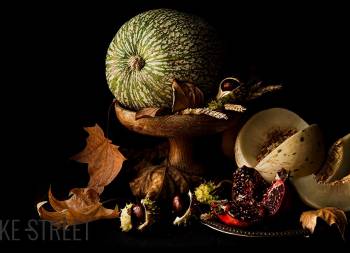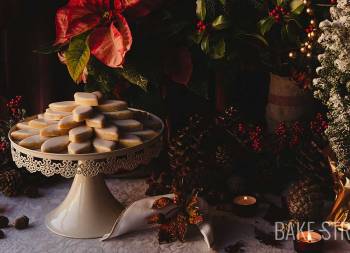
How to make Maraschino style candied cherries
Surely many of you are like me, you love candied cherries or Maraschino cherries, but it is not easy to access them in the latter case. In Spain, to buy them, you must always order them through online stores specializing in American products or through Amazon, but at a fairly high price. I had been thinking about making them for some time and, although a little bit short of time, I have come to share with you how to make Maraschino style candied cherries.
Or maybe I should specify… How to make Maraschino-style candied cherries? Because I don’t use Maraschino liqueur and, therefore, they would not be those cherries as such. But their final appearance and texture is practically identical. There is just one small point: they will not be as perfectly round as the commercial ones, although they will not look like raisins either. Of course.
The method to elaborate these Maraschino style candied cherries is very simple, only that you have to carry out a process that will last several days. The same way I did when I made candied melon. But, in this case, it will only take us five minutes a day for 12 days, but I can already tell you that the final result is definitely worth it. We can do the process while we prepare a coffee, a tea or even while we are watering the plants. It is totally compatible with an endless number of simple what-does.
By the way, if you want to know the origin of candied fruits, I tell you in detail in this post.
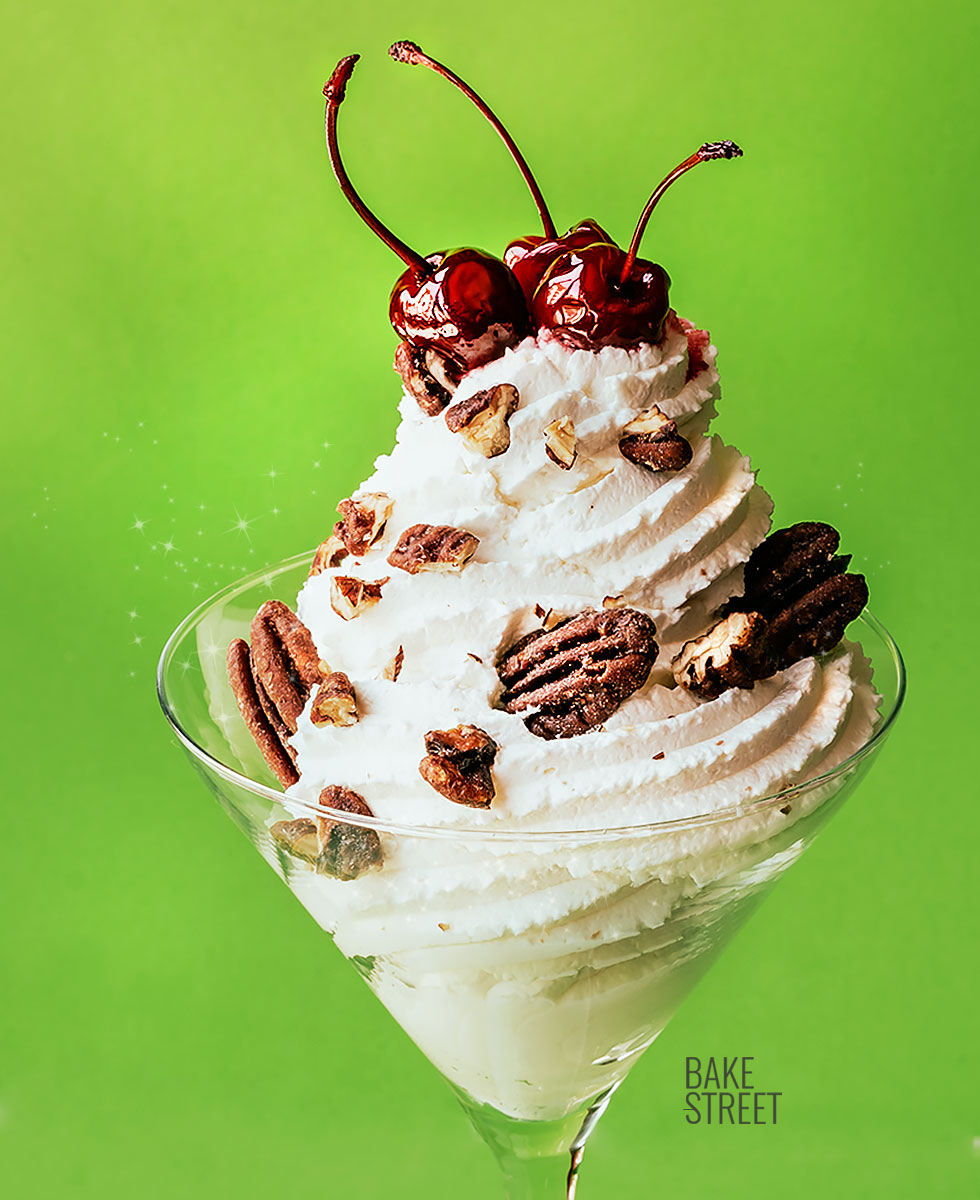
Differences between black cherry (amarene), sour cherry (visciole) and marasca cherry.
Before telling you a little more about Maraschino cherries, I would like to tell you about the types of sour cherries and the differences between them.
Sour cherries are the fruit of the “Prunus Cerasus“, a variety of cherry tree commonly known as “sour cherry“. They are red drupes (fleshy fruit surrounding a stone) that, once ripe, have a diameter between 1-1.5 cm. They are characterized by a pale flesh and little adhered to the bone. Their flavor is quite sour.
- Black cherry is characterized by a light red color and a slightly sour and bitter taste. For example, Cherry Vladimir, Griot Rossoshansky, Morel Bryanskaya…
- Cherries are characterized by a more intense red color and a slightly sour taste, but with sweet touches. For example, Montmorency, Lapins, Napoleon, Starking cherries…
- The marasco or marasca cherry, is a type of Morello sour cherry with a very bitter and sour taste, accompanied by a red color.
These are catalogued in the variety of cherries, they are characterized by their bitter/acid flavor, hence they are normally used to elaborate candied fruits, in syrup or liquors such as maraschino.
On the other hand we have the Picotas, this is undoubtedly the sweetest and tastiest variety of cherry. Besides having a superior caliber.
Origin of Maraschino cherries.
Maraschino cherries originated in Croatia, historic Dalmatia, and northern Italy about 200 years ago. Traders in these regions used to use a cherry called marasca cherry. It was left to macerate in maraschino liqueur, made from marasca pits and leaves, after being immersed in seawater. The result was an exquisite delicacy with a unique flavor.
The name marasca comes from the Italian word amarasca,from amaro, which in turn comes from the Latin word amārus(meaning “bitter“).
Maraschino liqueur was made from marasca cherries, whose main characteristic was their intense and persistent aroma. Along with this variety of cherry, honey, almonds and sugar were added, resulting in a very particular sweet liqueur.
These maraschino cherries did not reach the United States until the 1890s. They were an imported delicacy for the best hotels and restaurants in the country. They became a popular garnish in desserts and cocktails such as the Piña colada, Cosmopolitan, Miami Beach or the Manhattan. Its sweet taste with bitter touches differentiated it from the flavor of the natural cherry, candied, liqueur cherry or Amarena cherry.
Around 1896, American cherry manufacturers developed their own recipe using a local sweet cherry called Royal Anne cherry and reducing the amount of maraschino liqueur. They replaced part of this maraschino liqueur with almond oil.
Bitter almond oil is still used today to flavor and preserve non-alcoholic maraschino cherries.
In 1912, the FDA declared that the name “maraschino cherries” described only one thing: maraschino cherries preserved in maraschino liqueur.
By 1915, consumption of cherries in the United States had skyrocketed due to “the fashion of adding candied cherries, both for garnish and flavor, to many drinks and ice creams” wrote U.P. Hedrick in a report from the New York Agricultural Experiment Station.
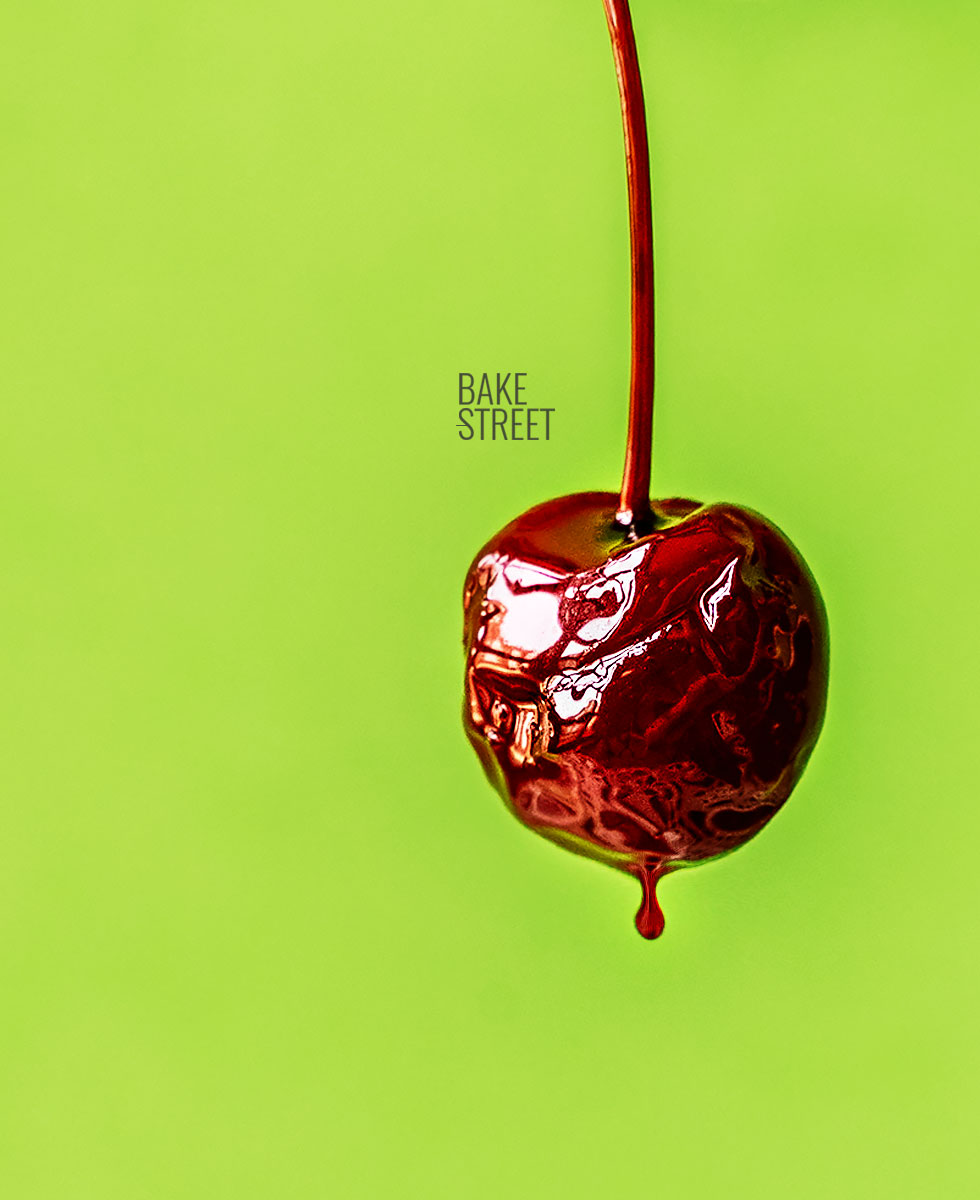
Any other form of production was not true maraschino cherries.
Alternative non-alcoholic cherries, such as Royal Anne cherries soaked in almond oil and flavoring, were to be labeled accordingly.
Some labels include “Imitation Maraschino Cherries” or “preserved cherries with artificial color and flavor”. Which are the vast majority of candied cherries found in stores under the name “Maraschino cherries”.
Oregon began growing its own cherries and at one point they had too many.
In 1919, the idea of maraschino cherries changed completely. A professor at Oregon State University, Ernest Wiegand, was commissioned to create a preservation method for cherries and it was he who perfected the process.
Royal Anne cherries spoiled too quickly, so experts opted for maraschino cherries.
That same year, the 18th Amendment was passed. Alcohol was banned in the United States, which meant that the traditional maraschino cherry preserved in liqueur needed a reinvention. Although it is said that, in reality, Prohibition had nothing to do with the reformulation of cherries. On the contrary, the aim was to improve the process to avoid excessive softening of the cherries.
The professor and Oregon cherry processors reinvented the maraschino cherry brine and eliminated alcohol from the process. This preservation method resembles that used today for preserved cherries or syrup.
Maraschino cherries made with a syrup replaced the alcoholic variant in the United States.
From 1925 to 1931, Wiegand made it his mission.
He works from every angle, consuming kilos of cherries and scribbling formulas in notebooks. And then comes the big moment: Wiegand realizes that if he adds calcium salts to the brine in which the cherries are immersed, they will harden.
In addition to this, he carried out other tweaks, but that’s the big breakthrough.
This was a miracle for Oregon cherry growers because, at last, they could tell East Coast manufacturers what to do with their Italian cherries.
But, serendipity of life, along came a duty that made foreign cherries very expensive to import.
In 1939, the FDA declared that the term “maraschino cherry” was synonymous with the sweet, red, shiny, sugary, canned cherry that everyone loved. Today, any sweet cherry produced and preserved in this way can be labeled as a maraschino cherry.
Making Maraschino-style candied cherries.
Based on the traditional process of confit added to the brine process, similar to the one we carry out with Kimchior Chucrut, we will prepare wonderful candied cherries at home.
As I mentioned above, it is a very simple preparation to carry out, but it requires several days to have them ready. In addition, I will show you how to pit them, with very good results, without the need of a cherry pitter. Then we will subject them to a process of resting with a mild brine and, subsequently, we will begin to candy them little by little with a syrup dyed and flavored with liquor. This can be omitted if you wish, thus making them suitable for everyone.
Recipe How to make Maraschino candied cherries
- 500 g firm, unripe cherries, with stone
- 1 liter water + 9 g salt
- 750 g water + 750 g sugar
- juice of half a lemon
- 130 g almond liqueur such as Frangelico, Amaretto, Maraschino liqueur... (optional)
- food red coloring, in my case I used Sugarflair "Extra Red" paste (the amount you see in the video)
MATERIAL WE WILL NEED AND SHOWN IN THE VIDEO:
- large pot
- container, preferably glass, for storing the cherries during the whole process, this is mine*
- colander
- saucepan
- glass bottle + wooden stick
- glass jar with cork from Revol*
- lemon squeezer
- precision tweezers*, optional
- laddle, this is mine from DeBuyer*
- glass jar for preserving
- gloves (optional)
*In these products you have a 5% discount on the website Claudia&Julia using this code BAKESTREET. Delivers throughout Europe.
Instructions
FIRST DAY
Prepare cherries.
- Wash cherries thoroughly under cold running water. Remove any cherries that may be damaged.
- Proceed to pit them. If you have a device for this purpose, a cherry pitting machine, perfect, you can use it. Otherwise, proceed as follows.

- Take a glass bottle and place the cherry in its mouth. Press with the help of a chopstick on one of the sides of the cherry, turn it and press again until we reach the bone. Push with the chopstick and it will come out cleanly.
- It is important to pierce both sides of the cherry to release pressure on it and prevent it from cracking or opening. This step should always be done on one side, not on the base or top (the stem area).
- Repeat this step with the rest of the cherries.
- Pour the cherries into a large container, preferably glass. Set aside.
Prepare brine.
- In a saucepan, add one liter of water together with 9 g of salt.
- Place over medium heat and bring to a boil. The salt should have dissolved completely.
- Remove from the heat and let it stand for 10 minutes so that it loses a little temperature.
Pour over cherries.
- Add the brine over the cherries, leave uncovered until the water loses a little temperature.
- Cover with its own lid, or a plate in its absence, and let stand for a maximum of 12-24 hours at room temperature.
- After the resting time in the brine, you will notice that the cherries have lost color. This is normal and is fine.

SECOND DAY
Prepare cherries to confit.
- Using a colander, separate the cherries from the brine. Discard the brine.
- Allow to drain while preparing the syrup for candying.
Prepare syrup.
- In a large pot, add water together with sugar, lemon juice, liqueur (if we decide to use it) and food coloring.
- Place over medium heat and let it boil. During this process, stir from time to time to make it easier for both the sugar and the coloring paste to dissolve completely. It is important to make sure that the sugar has dissolved completely.
- Remove from the heat.
Incorporate to cherries.
- Dump cherries into the glass container and pour the flavored red syrup over them. This first time, we will use a colander to pour the syrup in order to remove small pieces of lemon pulp that may have fallen out.
- During the first few days, the cherries will float. To help them remain submerged, place a plate or similar over them to make sure they are well covered.
- Cover and let stand for 24 hours at room temperature.
THIRD DAY
Repeat the process of separating the syrup from the cherries for candying.
- Place a colander over the large pot and pour the cherries with the syrup.
- Reserve the cherries, inside the glass container where we are carrying out the process, while we heat the syrup.

- Place the pot with the syrup over medium high heat and leave it ONLY until it comes to a gentle boil. We should not let the syrup boil for a long time because we will reduce the amount of liquid.
- Remove from the heat and then, immediately after, pour over the cherries.
- Place the dish on them, cover and let stand for 24 hours at room temperature.
FOURTH - TWELFTH DAY
Repeat the process of separating the syrup from the cherries for candying.
- For eight days, counting from the fourth day of the process, repeat this same process.
- Separate the syrup from the cherries, heat and put both in the same container to let stand for 24 hours.
- As the cherries are candied, they will turn red, reduce in volume and begin to be submerged in the syrup.
- After the last step of heating the syrup and letting it stand for 24 hours, on the 12th day of the process, proceed to the canning of the cherries.
Store candied cherries.
- If we are going to preserve them under vacuum, we can do two things; Heat the syrup once again, fill the crystal containers with cherries and hot syrup, close with the lid and place upside down to allow the air to escape while the contents cool. Alternatively, you can bottle the cherries cold, without heating the syrup, place the lid on and immerse in a pot of hot water, and place over medium-low heat for 20 minutes to allow the vacuum to develop.
- If, on the other hand, we are going to bottle them to be consumed in the next 3 months, we can store them directly in a glass jar and keep them refrigerated.
- They can be consumed directly after this process, if you wish, although it is advisable to let them stand for 4 weeks in the syrup to enhance their flavor and acquire a more vivid and intense color, even in the stems.

Notes
- Ideally, to elaborate this recipe, we will need to use cherries. Picotas are larger in size, do not have a stalk and are usually riper.
- We must try to damage the cherries as little as possible so that, once the whole candying process is finished, they remain whole. The process I show you, in case you do not have a cherry pitter, is perfect and gives very good results. Even better than using a straw.
- Surely you have read that they can be made without pitting. I do not recommend it. The final taste will be bitter, besides being very uncomfortable when eating them. For my part, I strongly advise against it.
- The first day we will let the cherries rest in a brine to help them lose a little water and have a crunchier final texture. This will also help them to lose color. This is an important step since our intention is to dye them red and, in this way, the color will be much more vivid and intense. The following eleven days we will carry out the confit process.

- The lighter the cherries, the more intense the final color will be. A much more vivid red.
- In my case I have used food red coloring paste, but you can use any other variety you have at home or prefer. I advise you to observe the final color result and adjust the amount according to the intensity you want.
- If you do not want to use liqueur, you can substitute that amount with water.
- If you use Marasquino liqueur, which is a cherry liqueur, instead of almond liqueur you should add a small amount of almond oil or almond aroma/extract to give these candied cherries their particular flavor.
- The candying process is slow, during 12 days we will have to combine the heating of the syrup together with the rest to favor the osmosis process.
- The resting time of the cherries, with the brine and syrup, should always be at room temperature. If it is very hot, exceeding 86ºF/30ºC, it is better to refrigerate them.
- If you have a digital refractor, you can measure the Brix degrees. This should be between 45-70 degrees Brix.
- I advise you to use a glass container to preserve the cherries during the whole candying process. You can also use a glass bowl.
- Once the process is finished, it is advisable to let them rest in the syrup for 4 weeks. This enhances their flavor and intensifies their color.
- We can keep the candied cherries, vacuum-packed, for up to 1 year and, once opened and refrigerated, for up to 2 months. If you have a digital refractor and you reach 65-70 degrees Brix, they can be vacuum packed for up to 2 years since with this percentage of sugar in relation to the final amount of water, pasteurization is not necessary.

I really hope you will try these Maraschino-style candied cherries, because the result is spectacular. The texture is crunchy on the outside and soft on the inside. The flavor, to my taste, has nothing to do with those that we can buy "fake" flavored. This aroma and flavor is much more delicate, aromatic and pleasant to the palate. They are incredible.
It is true that they are not so perfectly round, or red, but I think they stay at home forever. The color, as I said, can be greatly improved depending on the type of cherry we use and, above all, depending on their point of ripeness. This will be much easier for those who have a cherry tree at home, of course.
Next time I will make much more because they can be perfectly preserved in glass containers or vacuum-packed jars. Moreover, if we buy small jars, because we will not use many each time we open them, we are guaranteed to have them in the pantry for many months or even a couple of years.
Looking forward to hearing about your experience! I wish you a wonderful day.
Lots of love,
Eva
Sources: Hmong, Rivareno, Webmd, What's Cooking America
This post contains affiliated links.
